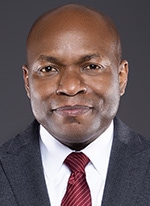Like humans, many organizations undergo change at some point during their lifespan. Those changes may be minor or quite significant (e.g., digital transformation or mergers).
Change is inevitable, and many organizations have skillfully implemented big changes, including the likes of British Airways, Netflix, Lego, Domino’s Pizza, Nokia and Coca-Cola.
On the flip side of the coin, poorly managed changes can lead your organization to failure. Approximately 99 percent of the time, change cannot be avoided, so it must be managed. Change management is an organization-wide effort, it starts with the executive team and trickles down to every employee. It cannot be implemented at the executive level alone. Your employees are at the core of successfully implementing change.
Your employees will typically go through four stages as your company undergoes its change. Those are denial, resistance, exploration and acceptance. For successful change management, you and the rest of your management team must remain aware of these stages and successfully navigate your employees through each one.
STAGE 1: DENIAL
When first learning of an impending change, most employees will initially react with denial, spurred by a variety of sources. Employees may subconsciously (or consciously) dislike your company’s acquisition, or they may not like having their own responsibilities increase. To help counter this denial, communication truly is key. Providing your employees with as much relevant information as possible will help them overcome their denial.
STAGE 2: RESISTANCE
Since humans, by nature, tend to resist change, so too do organizations. During this stage, the productivity, morale and competency of your employees will be reduced. Some tips to successfully navigate this resistance include motivating your employees to share any doubts they may have about the change and encouraging them to become engaged in the change process.
STAGE 3: EXPLORATION
Once employees come to terms with the fact that the change cannot be stopped or impeded, the third stage is an exploration of the change. While some will explore ways to enable the change, others — who may still somewhat doubt the change — will try to discover ways around it. Because these employees still have one foot in the “resistance” phase, the job of a manager is doubly important. Stymying employees’ exploration of these alternatives may in fact just serve to solidify their own resistance.
STAGE 4: COMMITMENT AND ACCEPTANCE
Once your employees accept that the change is happening, they can commit to helping see it through. Commitment doesn’t necessarily mean that employees become fully accepting of the change, but the majority of them will see it as a valid strategy for the further development of the organization.
Change can rarely be stopped, but it can be managed through these four stages. The faster you’re able to overcome the denial stage, the less time your employees will spend resisting the change, and the more quickly they’ll explore the change and commit to it.
No single blueprint or methodology for change will work every time and across every organization. That’s why choosing the best strategy, based on a variety of factors, is key to successfully managing your change. There are dozens of models. The truth of the matter is that it’s unlikely any single model will work best for your organization. More likely, your own change model will take aspects from a few of the existing ones to create something new. However, there are a few tips to help your organization identify the best fits.
Since your employees are so integral to this process, it can be hugely beneficial to analyze how they have reacted to change in the past. If you’ve noticed a lot of previous resistance, it can be helpful to choose a model that focuses more on planning for change, rather than one that focuses more on executing the change model.
Ultimately, your goal should be to avoid constraining yourself with just one change model. Instead, leave yourself open to developing a change model that works for the unique characteristics of your organization.


Dee Brown is an entrepreneur, author, speaker, philanthropist and host of the WTVP program “Self-Made with Dee Brown CEO.” A member of the Forbes Business Council, he is president and CEO of The P3 Group Inc. in Memphis, the nation’s largest minority-owned development and construction firm.
Change Management
"No single blueprint or methodology for change will work every time and across every organization."
Like humans, many organizations undergo change at some point during their lifespan. Those changes may be minor or quite significant (e.g., digital transformation or mergers).
Change is inevitable, and many organizations have skillfully implemented big changes, including the likes of British Airways, Netflix, Lego, Domino’s Pizza, Nokia and Coca-Cola.
On the flip side of the coin, poorly managed changes can lead your organization to failure. Approximately 99 percent of the time, change cannot be avoided, so it must be managed. Change management is an organization-wide effort, it starts with the executive team and trickles down to every employee. It cannot be implemented at the executive level alone. Your employees are at the core of successfully implementing change.
Your employees will typically go through four stages as your company undergoes its change. Those are denial, resistance, exploration and acceptance. For successful change management, you and the rest of your management team must remain aware of these stages and successfully navigate your employees through each one.
STAGE 1: DENIAL
When first learning of an impending change, most employees will initially react with denial, spurred by a variety of sources. Employees may subconsciously (or consciously) dislike your company’s acquisition, or they may not like having their own responsibilities increase. To help counter this denial, communication truly is key. Providing your employees with as much relevant information as possible will help them overcome their denial.
STAGE 2: RESISTANCE
Since humans, by nature, tend to resist change, so too do organizations. During this stage, the productivity, morale and competency of your employees will be reduced. Some tips to successfully navigate this resistance include motivating your employees to share any doubts they may have about the change and encouraging them to become engaged in the change process.
STAGE 3: EXPLORATION
Once employees come to terms with the fact that the change cannot be stopped or impeded, the third stage is an exploration of the change. While some will explore ways to enable the change, others — who may still somewhat doubt the change — will try to discover ways around it. Because these employees still have one foot in the “resistance” phase, the job of a manager is doubly important. Stymying employees’ exploration of these alternatives may in fact just serve to solidify their own resistance.
STAGE 4: COMMITMENT AND ACCEPTANCE
Once your employees accept that the change is happening, they can commit to helping see it through. Commitment doesn’t necessarily mean that employees become fully accepting of the change, but the majority of them will see it as a valid strategy for the further development of the organization.
Change can rarely be stopped, but it can be managed through these four stages. The faster you’re able to overcome the denial stage, the less time your employees will spend resisting the change, and the more quickly they’ll explore the change and commit to it.
No single blueprint or methodology for change will work every time and across every organization. That’s why choosing the best strategy, based on a variety of factors, is key to successfully managing your change. There are dozens of models. The truth of the matter is that it’s unlikely any single model will work best for your organization. More likely, your own change model will take aspects from a few of the existing ones to create something new. However, there are a few tips to help your organization identify the best fits.
Since your employees are so integral to this process, it can be hugely beneficial to analyze how they have reacted to change in the past. If you’ve noticed a lot of previous resistance, it can be helpful to choose a model that focuses more on planning for change, rather than one that focuses more on executing the change model.
Ultimately, your goal should be to avoid constraining yourself with just one change model. Instead, leave yourself open to developing a change model that works for the unique characteristics of your organization.
Dee Brown is an entrepreneur, author, speaker, philanthropist and host of the WTVP program “Self-Made with Dee Brown CEO.” A member of the Forbes Business Council, he is president and CEO of The P3 Group Inc. in Memphis, the nation’s largest minority-owned development and construction firm.
Recommended